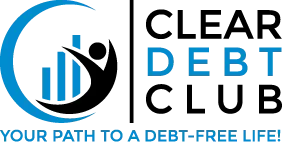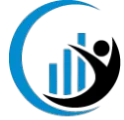Introduction
Credit card debt is a growing problem for many Americans. With enticing rewards programs and ubiquitous marketing, it’s easy to overspend on credit cards without realizing it. Before you know it, minimum payments and compounding interest result in balances that seem impossible to repay.
The average US household has around $6,200 in credit card debt. Over 160 million Americans have credit card debt, which can significantly impact credit scores and financial wellbeing if not managed properly.
While credit card debt might seem overwhelming, by following some key strategies you can make a plan to pay it off while avoiding additional accumulation. With time and discipline, you can become free of credit card debt and get your finances back on track.
Causes of Credit Card Debt
There are many reasons consumers can find themselves deep in credit card debt:
- Overspending and lack of budgeting – It’s easy to impulse purchase or splurge without thinking about overall finances and incoming cash flow. Not tracking income and expenses allows balances to creep up.
- Emergencies and unexpected expenses – Job losses, medical bills, home or auto repairs often force people to rely on credit cards when they are short on emergency savings.
- Job loss or reduction in income – A layoff, reduced hours, pay cut or job change can mean falling behind on credit card payments.
- Poor money management skills – Not prioritizing finances or misunderstanding compound interest results in costly credit card mistakes.
- Impulse purchases and retail therapy – Swiping the card for an emotional pick-me-up leads to debt accumulation over time.
- Lack of financial literacy – Not fully grasping credit risks and repayment obligations leads to overuse.
- Predatory lending practices – Some issuers target vulnerable groups with high-fee cards and misleading terms.
Consequences of High Credit Card Debt
Carrying high credit card balances over time can seriously impact your financial situation:
- High interest rates and fees – Issuers commonly charge 15-25% APR and late fees, making balances swell quickly.
- Damaged credit score – High credit utilization and late payments hurt your score, limiting access to affordable loans.
- Debt accumulation – Minimum payments only cover a fraction of the interest, so debt snowballs.
- Wage garnishment – Creditors can legally seize a portion of your paycheck to repay debts.
- Bankruptcy – Those unable to repay often turn to bankruptcy protection to discharge debts.
- Stress and anxiety – Constant debt worries and collection calls create emotional and mental strain.
How to Assess Your Credit Card Debt
The first step is to fully understand your current credit card debt obligations:
- Gather all statements and review recent charges, interest rates, fees, and minimum payments.
- Calculate total debts across all cards and lenders. Determine monthly minimum payments.
- Assess if you can realistically pay off balances yourself based on income and budget.
- Check your credit reports and scores for accuracy and negative marks. Dispute any errors with bureaus.
- Create a detailed budget accounting for all income and expenses to see where you can cut back and find extra money to put toward debt.
Steps to Manage and Pay Off Credit Card Debt
Once you’ve assessed the scope of your credit card debt, here are some proven strategies to tackle it:
- Stop using credit cards until the existing debt is completely paid off to avoid further accumulation.
- Speak to your credit card issuers about lowering interest rates, changing due dates, or balance transfers with a 0% introductory APR.
- Make more than the minimum payments each month to reduce principal balances quicker.
- Pay off the card with the highest interest rate first while making minimums on the others.
- Consolidate multiple credit card debts with a fixed-rate personal loan from a bank or credit union.
- Seek help from a nonprofit credit counseling agency for managing payments and negotiating with creditors.
- Stick to a written payoff plan that maps your path to becoming debt-free. Celebrate milestones along the way.
Debt Management Programs
Nonprofit credit counseling agencies like the National Foundation for Credit Counseling offer debt management programs (DMPs) to help organize your credit card payments. Benefits include:
- Lower interest rates negotiated with creditors
- Single consolidated monthly payment
- Ongoing budgeting and money management assistance
- Help communicating with creditors about your situation
DMPs provide structure but may have enrollment fees. Research carefully before choosing an agency.
Debt Settlement
Debt settlement involves negotiating directly with credit card companies or using an attorney or settlement firm. The goal is agreeing on a lump sum payoff amount lower than what you owe. This can impact your credit score and is not a quick fix.
Debt Consolidation Loans
One way to streamline repaying credit card debt is combining it into one new loan with fixed payments:
- Banks, credit unions and online lenders offer debt consolidation loans.
- You get one lower monthly payment over a longer loan term.
- Unsecured loans have higher rates than secured, like home equity loans.
- It’s critical to avoid accruing more credit card debt during the repayment period.
Bankruptcy
Filing for bankruptcy is a legal proceeding allowing certain debts like credit cards to be discharged, or eliminated. It provides relief but damages your credit for years.
- Chapter 7 bankruptcy liquidates assets to pay back a portion of debt, discharging the rest.
- Chapter 13 bankruptcy sets up a 3-5 year structured repayment plan under court supervision.
Bankruptcy should only be considered as an absolute last resort after exhausting all other debt repayment options since it stays on your credit report for up to 10 years.
Tips to Avoid Future Credit Card Debt
Once you’re free of credit card debt, be vigilant to avoid falling back into the trap:
- Build an emergency fund with 3-6 months of living expenses.
- Follow a budget that balances income and spending.
- Pay credit cards in full each month.
- Limit the number of credit cards you have open.
- Track spending diligently and review statements for errors.
- Institute a waiting period for large purchases to avoid impulse spending.
- Take advantage of grace periods so you aren’t charged interest on purchases right away.
- Earn cash back, points or airline miles on cards you pay off each month to maximize rewards.
FAQs
How do I negotiate with credit card companies?
Research negotiation tactics in advance, be persistent and professional in calls and letters, and offer to pay a reasonable lump sum settlement amount to satisfy debt.
What is the best way to consolidate debt?
Evaluate the pros and cons of programs like nonprofit credit counseling, balance transfers to a new 0% interest card, and unsecured personal loans. Choose the one that best fits your situation.
When is debt settlement a good option?
When you have significant unsecured debt like credit cards and can come up with reasonable lump sum settlement offers that creditors may accept. This helps avoid bankruptcy
Is credit counseling helpful?
Yes, reputable nonprofit credit counseling agencies provide budget and money management assistance, negotiate lower interest rates, and help communicate with creditors to organize payments
Should I take money from my 401(k) to pay off debt?
Generally this is not recommended and should only be a last resort. Withdrawing retirement funds subjects you to fees, penalties and lost growth potential. Explore all other options first.
Conclusion
By understanding the causes, assessing your specific situation, and utilizing proven payoff strategies, you can take control of your credit card debt. While it takes discipline and likely lifestyle changes, freedom from credit card debt is within your reach. Stick to your debt management plan and you’ll ultimately get there.



